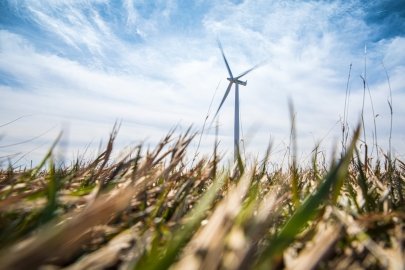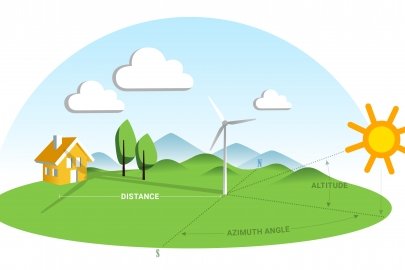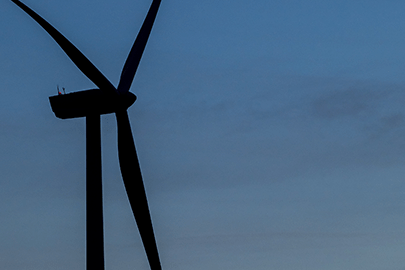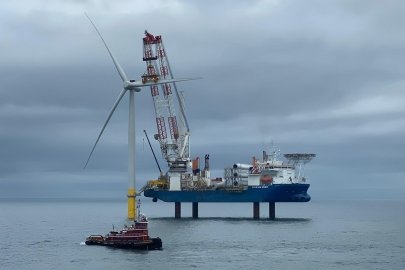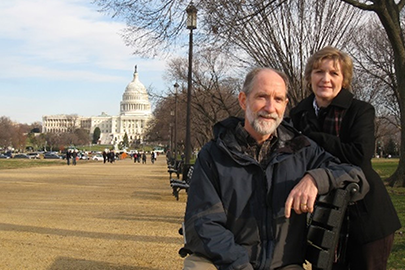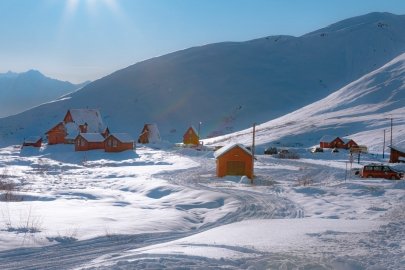A new study indicates that nearly 1,400 gigawatts of distributed wind capacity could be profitably deployed today across the United States, which amounts to more than half of the nation’s current annual electricity consumption.
Wind Energy Technologies Office
May 16, 2022NREL study identifies opportunities for widespread deployment of distributed wind energy
A comprehensive analysis released by the National Renewable Energy Laboratory (NREL) indicates that nearly 1,400 gigawatts (GW) of distributed wind capacity could be profitably deployed today across the United States. This amounts to more than half of the nation’s current annual electricity consumption, and is a big increase from the 1.1 GW installed today.
“This study shows that distributed wind energy could bring renewable power to millions of American households,” said Eric Lantz, NREL principal investigator of the study. “Distributed wind energy offers significant potential to help communities transition to a renewable energy future and can deliver power to residential and industrial users near where it’s generated, while reducing the need for transmission system expansion.”
The Distributed Wind Energy Futures Study highlights the technical and economic potential for distributed wind energy deployment at all scales—from kilowatts to megawatts—and considers opportunities for distributed wind energy in agricultural, commercial, industrial, and residential settings and in disadvantaged communities.
Distributed wind energy is connected to local electricity distribution networks and can provide onsite energy to individuals, communities, and businesses. Distributed wind technologies used in combination with other distributed energy resources (e.g., solar, battery storage, and microgrids) can generate, store, and manage energy consumption of nearby customers while increasing power system reliability.
Distributed wind systems can range from a less than 1-kilowatt (kW) off-grid wind turbine at a remote cabin or oil and gas platform, to a 15-kW wind turbine at a home or farm, to several multimegawatt wind turbines at a university campus or connected to a utility’s distribution system.
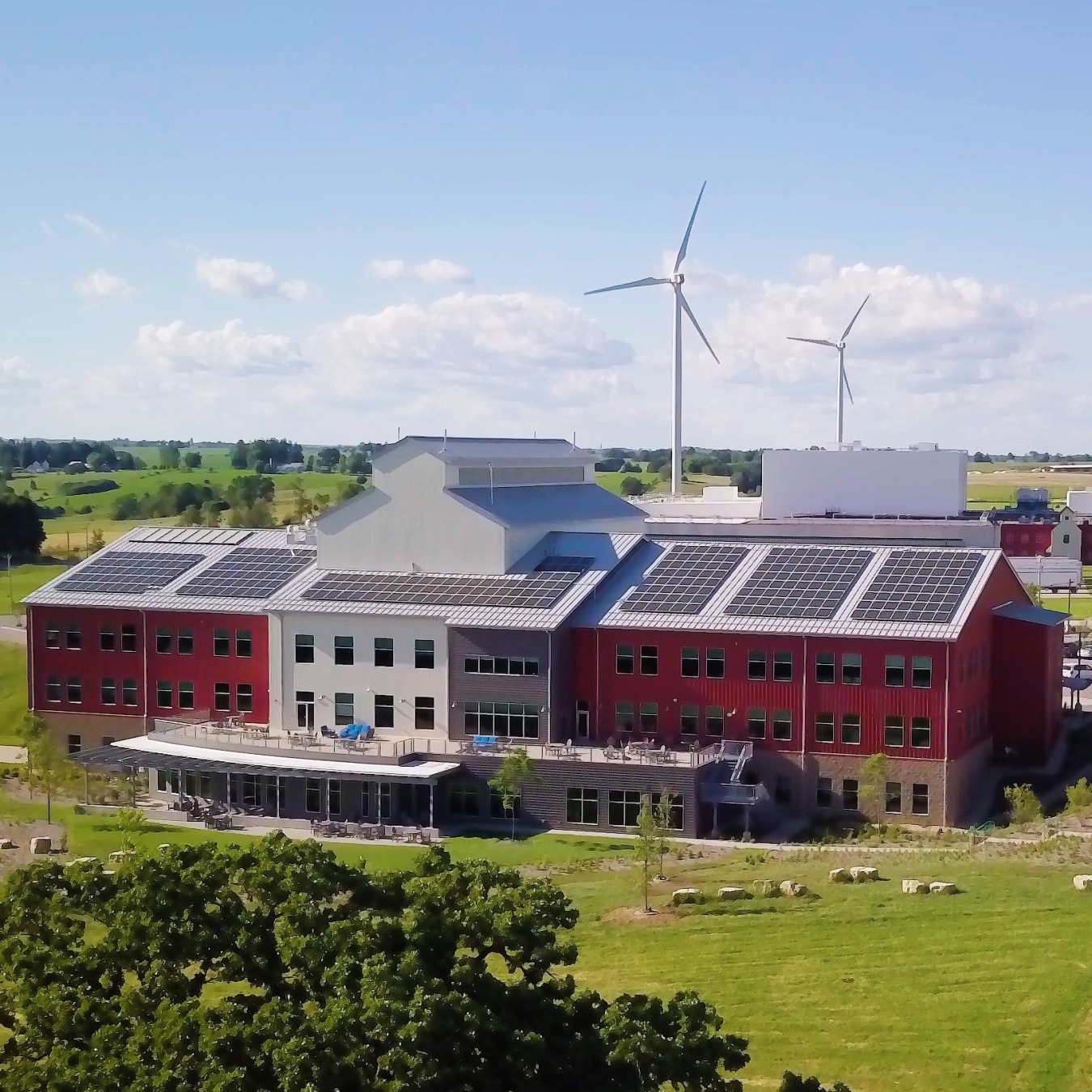
New NREL research illustrates that distributed wind energy systems, such as this one, could be increasingly valuable as rural residents, businesses, and communities drive their own transition to an affordable and reliable energy future.
Study Builds on 2016 Analysis
The Distributed Wind Energy Futures Study report builds on NREL’s first-ever exploratory analysis, published in 2016, of future opportunities for behind-the-meter distributed wind energy systems (systems that are connected to the grid on the customer’s side). Using the Distributed Wind (dWind) model—a complementary product to NREL’s Distributed Generation Market Demand (dGen™) model—NREL researchers simulated renewable energy potential, economics, siting, load, and policy conditions for millions of potential U.S. distributed wind energy sites.
To expand this research, in 2022, NREL added new, higher-resolution data and modeling capabilities to dWind, including real-world dimensions for 150 million parcels of property in the United States as well as modeling techniques to identify the best locations for distributed wind energy technologies of all forms.
“It’s important to study the potential of distributed wind energy projects at the most detailed level, as they can vary widely with local conditions,” said Kevin McCabe, an NREL analyst and dGen developer. “As one of the first analyses of parcel-level distributed energy resources, the Distributed Wind Energy Futures Study advances assessments of wind energy’s economic and technical potential with unprecedented resolution and enables us to identify trends by land-use type, end-use sector, and geography.”
Technology Cost, Siting, and Policy Conditions Are Key
Funded by the U.S. Department of Energy’s Wind Energy Technologies Office, the Distributed Wind Energy Futures Study identifies that there is a large potential of economically viable and profitable distributed wind energy capacity today—nearly 1,400 GW. Even reaching just some of this potential, distributed wind can be a meaningful contributor to the U.S. future energy system and achieving our climate goals.
At the same time, the economics of distributed wind will depend on future policies. For example, if current tax credits and net-metering policies expire as scheduled, economic potential could drop between 2022 and 2035. However, if current tax credits and policies were extended and expanded in a strategic manner, the potential for distributed wind could increase by more than 80% for behind-the-meter applications and by almost 800% for front-of-the-meter applications (meaning systems connected to the distribution grid to provide wholesale energy supply).
“Optimistically, distributed wind energy could generate terawatt-level power and play a meaningful role in the U.S. energy future,” Lantz said. “Our analysis suggests that technology cost reduction, performance improvements, and more relaxed siting restrictions—in concert with policy support—are important levers in realizing the deployment potential of distributed wind energy.”
Location Matters
According to the study, states in the nation’s Midwest and Heartland regions have the largest potential for distributed wind, thanks to the combination of high wind speeds and sufficiently high retail rates. The Pacific and Northeast regions also have significant potential for widespread expansion of behind-the-meter distributed wind deployments, due to their relatively high retail rates and elevated wind speeds in specific locations.
In addition, significant opportunities exist to expand distributed wind in disadvantaged communities, identified as those with a high risk for environmental hazards and/or high proportions of low-income households. This is particularly true for behind-the-meter deployments in states such as Texas, Montana, Michigan, and New Mexico, potentially creating a means to reduce energy burden in these communities.
Additional findings from the study include:
- Agricultural lands have the most distributed wind potential, at hundreds of gigawatts. Residential, commercial, and industrial lands also have gigawatt-scale potential, particularly for behind-the-meter applications.
- States with the most near-term potential for behind-the-meter applications include Texas, Minnesota, Montana, Colorado, Oklahoma, and Indiana. States with the most near-term potential for front-of-the-meter applications include Oklahoma, Nebraska, Illinois, Kansas, Iowa, and South Dakota.
- States across much of the Northeast as well as California have less profitable distributed wind potential, but there are select locations with significant wind resources, which, when combined with generally higher retail electricity rates, means there are compelling opportunities in these areas too.
Resources for Additional Information
- Watch the informational webinar Distributed Wind Energy Futures Study: Exploring opportunities for distributed and community-scale wind during the next two decades
- Read the full Distributed Wind Energy Futures Study report
- Learn more about the Distributed Wind Research Program at the U.S. Department of Energy’s Wind Energy Technologies Office
- Learn more about NREL’s Distributed Wind Research and Energy Analysis.
Explore previous editions of the Wind R&D Newsletter or browse articles by topic:
Subscribe to the WETO e-newsletter to stay informed on the latest wind energy news, events, publications, and updates.


